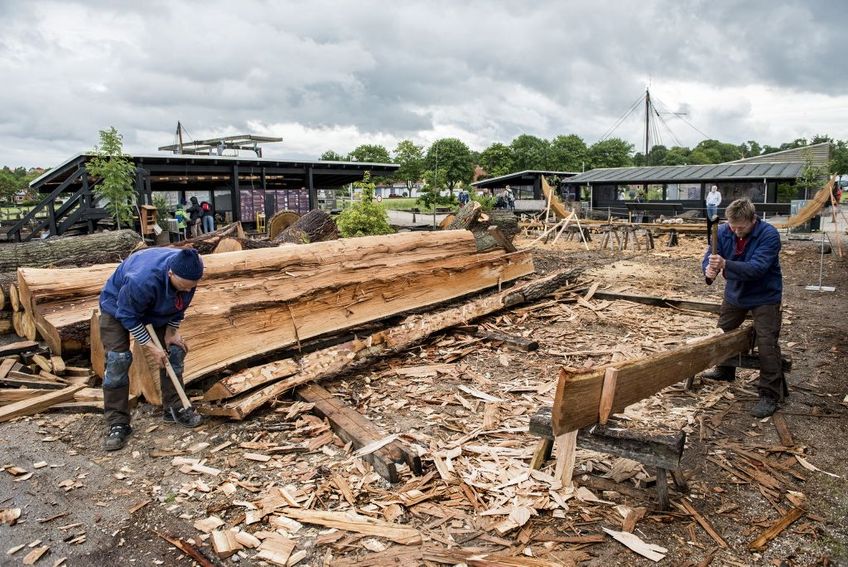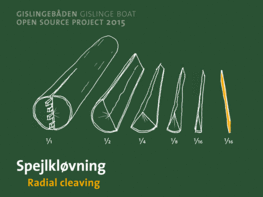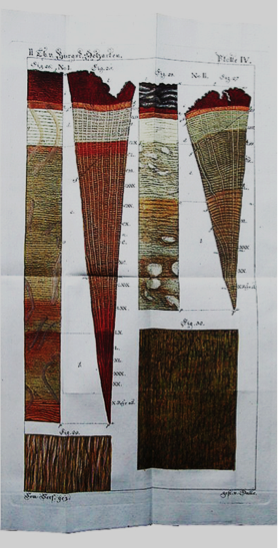

The cleaved plank
The saw was not used when making planks in the Viking Age. Instead, planks were cleaved as illustrated to the right. When cleaving planks for boatbuilding, it is important to find the right tree in the forest with the necessary dimensions and quality. The tree must be straight-growing and knot-free, and it must be big.
The outer sapwood - wich is lighter in colour - rots too quickly and cannot be used, and the centre of the trunk (pith) grows irregularly, so that must also be cut away. Therefore, the tree essentially needs to be oversized. If many broad planks are required, then the diameter must be increased.
In an oak tree, the pith rays extend from the pith to the tree’s outer edge, just like spokes on a bicycle wheel. When oak is cleaved, it splits along both these pith rays and the tree’s own fibres. If the tree is twisted, the cleaving will also follow this twist. Usually, you can tell if the fibres are twisted or straight-growing by looking at the bark.
When boatbuilding, a straight-growing tree is always optimal, as it is easier to produce planks with an even thickness if the cleaved sections aren’t twisted. However, a twisted plank still has the same strength, so long as the fibres are not cut over in an attempt to straighten the plank.
After cleaving, the pieces are roughly shaped with an axe. The planks are then smoothed using a broad-bladed axe, the long edge of which serves to even out the surface of the planks. On some boats, tool marks from axes can be seen while others bear traces of the use of planes. A plank is called a board when it is placed on a boat.

Explore the boat’s hull. Click on the grey areas to read more about the hull’s construction.
